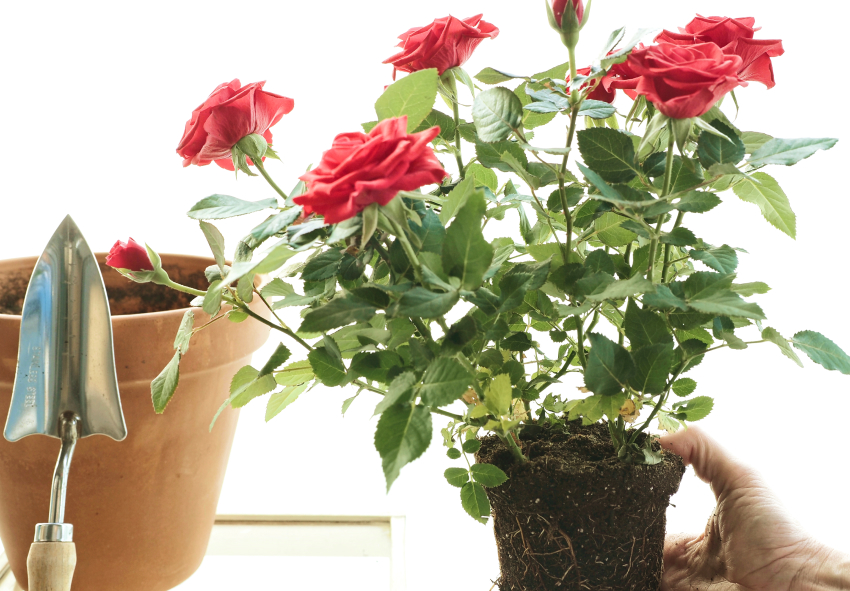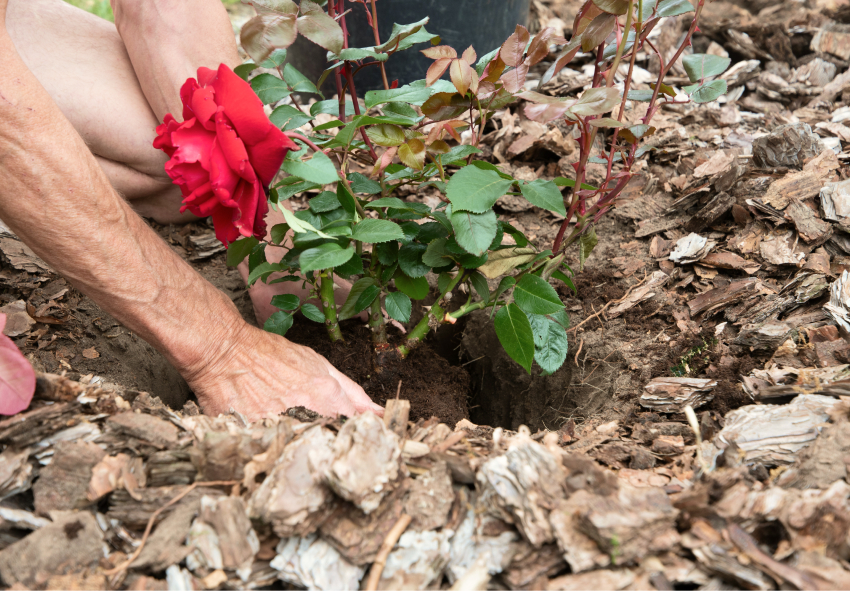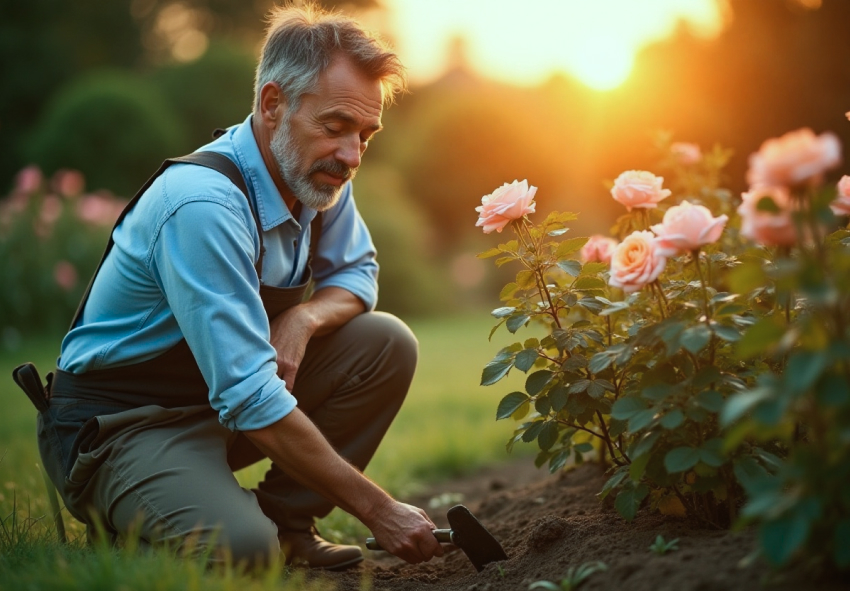Roses are among the most beloved garden plants, prized for their beauty, fragrance, and wide variety of colors and forms. Whether you’re a beginner or an experienced gardener, knowing how to plant roses properly is key to growing healthy, long-lasting blooms. This rose planting guide will walk you through choosing the right time, soil, and method for successful planting. Our gardening blog is a perfect place to find all the information you need!
When to Plant Roses

When to plant roses depends largely on your local climate and the type of rose you’re growing. In most regions, the ideal time is early spring after the last frost or in the fall, allowing roots to establish before extreme temperatures. Bare-root roses should be planted while dormant, while container-grown roses offer more flexibility and can be planted whenever the soil is workable.
Choosing the Right Rose Variety
There are many types of roses to choose from, including hybrid teas, floribundas, climbers, and shrub roses. Consider these factors when selecting a variety:
- Choose by Color and Fragrance: Roses come in nearly every color and scent profile imaginable. Whether you want a dramatic focal point or a subtly fragrant hedge, there’s a rose variety to match your garden aesthetic.
- Decide on Bloom Type and Frequency: Roses vary in bloom shape, size, and how often they flower. Some bloom once per season, while others, known as repeat or continuous bloomers, flower throughout the growing season.
- Consider Your Climate: Some roses thrive in hot, dry climates while others prefer cooler, more humid regions. Choose varieties that are well-suited to your local weather conditions to reduce maintenance and increase success.
- Match the Rose to Your Garden Space: Think about how much room you have. Climbing roses need vertical support, while shrub roses and miniature varieties work well in containers or small beds.
- Look for Disease Resistance: Many modern rose cultivars are bred for resistance to common diseases like black spot and powdery mildew. These varieties are easier to care for and ideal for beginner gardeners.
Selecting the Best Soil for Roses
The best soil for roses is well-draining, loamy soil enriched with organic matter. Roses prefer a slightly acidic to neutral pH range, ideally between 6.0 and 7.0. If your soil is too sandy or clay-heavy, amend it with compost or peat moss to improve structure and fertility before planting.
Preparing the Planting Site
Proper site preparation is crucial to ensure healthy growth and flowering. Take time to clear weeds and loosen the soil before planting to reduce competition and improve drainage. The more effort you put into preparing the site, the less maintenance your rose bushes will need later on.
Sunlight Requirements
Roses need at least 6 hours of direct sunlight per day for optimal blooming. Morning sun is especially beneficial as it helps dry dew from leaves, reducing the risk of fungal diseases. Choose a spot that isn’t shaded by buildings or large trees.
Spacing and Airflow
Good air circulation is essential for disease prevention. Space your rose bushes 2 to 3 feet apart, depending on the variety. Avoid crowding roses with other plants that may block airflow or compete for nutrients.
Digging and Conditioning the Hole
Dig a planting hole that is about twice as wide and just as deep as the rose’s root ball or root spread. Mix compost or aged manure into the soil removed from the hole to enrich it. Some gardeners also add bone meal or a slow-release fertilizer to promote strong root development.
How to Plant Rose Bushes

Correct planting techniques lead to stronger plants and more abundant blooms. Whether you’re planting bare-root or container-grown roses, following the proper steps minimizes transplant shock. Take care to avoid damaging the roots, and ensure the plant is positioned at the correct depth.
Planting Bare-Root Roses
Before planting bare-root roses, soak the roots in a bucket of water for 4–6 hours. Create a small mound of soil at the bottom of the hole and spread the roots around it. Make sure the bud union (the swollen area where the rose is grafted) sits just at or slightly above the soil level in mild climates, or 1–2 inches below in colder zones.
Planting Container-Grown Roses
Gently remove the rose from its container, being careful not to disturb the roots too much. Loosen the root ball slightly to encourage outward root growth. Place it in the hole, backfill with amended soil, and firm it gently to remove air pockets.
Watering After Planting
Water the rose thoroughly immediately after planting to help settle the soil around the roots. Ensure the soil is moist but not soggy. Continue to water deeply once or twice a week, depending on weather and soil conditions, to encourage root establishment. Find more useful information about caring for roses after planting in our full guide for roses.
Mulching and Aftercare
After planting, mulching and consistent aftercare help roses transition smoothly into their new environment. Monitor for signs of wilting, nutrient deficiencies, or pests during the first few weeks. With steady care, your roses will quickly adapt and begin producing healthy new growth.
Benefits of Mulching
Apply a 2–3 inch layer of organic mulch such as bark chips or shredded leaves around the base of the rose. Mulch helps retain moisture, suppress weeds, and regulate soil temperature. Keep mulch a few inches away from the stem to prevent rot.
Watering Schedule
Newly planted roses need consistent moisture to establish strong roots. Water deeply but infrequently, aiming for about 1–2 inches per week, depending on climate and rainfall. Adjust your watering based on soil drainage and the rose’s appearance.
Fertilizing Tips
Begin fertilizing your roses once new growth appears, typically 3–4 weeks after planting. Use a balanced rose fertilizer or one specifically formulated for blooming shrubs. Avoid over-fertilizing, which can lead to excessive foliage with fewer flowers.
Common Mistakes to Avoid When Planting Roses

While planting your roses it’s important to avoid common mistakes, like:
- Planting Too Deep or Too Shallow: Incorrect planting depth can stress the plant—burying the graft union too deep can lead to rot, while planting too shallow may expose roots to the elements.
- Overwatering or Poor Drainage:Roses dislike soggy roots. Planting in poorly draining soil or watering too frequently can lead to root rot and other fungal diseases.
- Choosing the Wrong Location: Planting in too much shade or in areas with poor airflow can result in weak blooms and increase the risk of mildew, black spot, and other issues.
- Skipping Soil Preparation: Planting directly into poor or compacted soil without amending it can limit root growth and reduce flowering. Always enrich the soil with compost or organic matter.
- Neglecting Aftercare: Failing to water, mulch, or monitor the plant after planting can delay establishment. Young roses need regular attention during the first few weeks to thrive.
Final Tips for Success
Monitor your roses regularly for signs of stress or pests, and take early action when needed. Keep a gardening journal to track when and how you planted, which can help with seasonal adjustments. With proper care and attention, your rose bushes will reward you with beautiful blooms year after year.
Frequently Asked Questions (FAQs) about Planting Roses
1. How long does it take for roses to establish?
Roses typically take 6–8 weeks to establish roots after planting. During this time, focus on watering consistently and avoiding heavy pruning. Once established, roses will begin to show vigorous new growth and, in most cases, begin blooming within the same season.
2. Can I plant roses in pots or containers?
Yes, many rose varieties, especially miniatures and compact shrubs, do well in containers. Choose a large pot with good drainage, use quality potting mix, and place it in full sun. Container-grown roses may need more frequent watering and feeding compared to in-ground plants.
3. What’s the best fertilizer for new rose bushes?
Use a balanced, slow-release fertilizer labeled for roses, or a bloom-boosting formula low in nitrogen and high in phosphorus. Apply sparingly until the plant is established. Avoid fertilizing right after planting, as young roots are sensitive and can burn easily.
4. Can I plant roses in clay soil?
Clay soil can be used for planting roses if amended properly. Improve drainage and texture by mixing in compost, sand, or gypsum. Raised beds are also a good option if your soil is particularly compacted or holds excess moisture.
5. How can I order Holland roses from your online store?
Ordering roses from our online store Dutch-bulbs.com is simple and convenient. Visit our website and browse our selection of rose varieties, including those sourced from Holland for their exceptional quality and beauty.
Published: 02.05.2025
